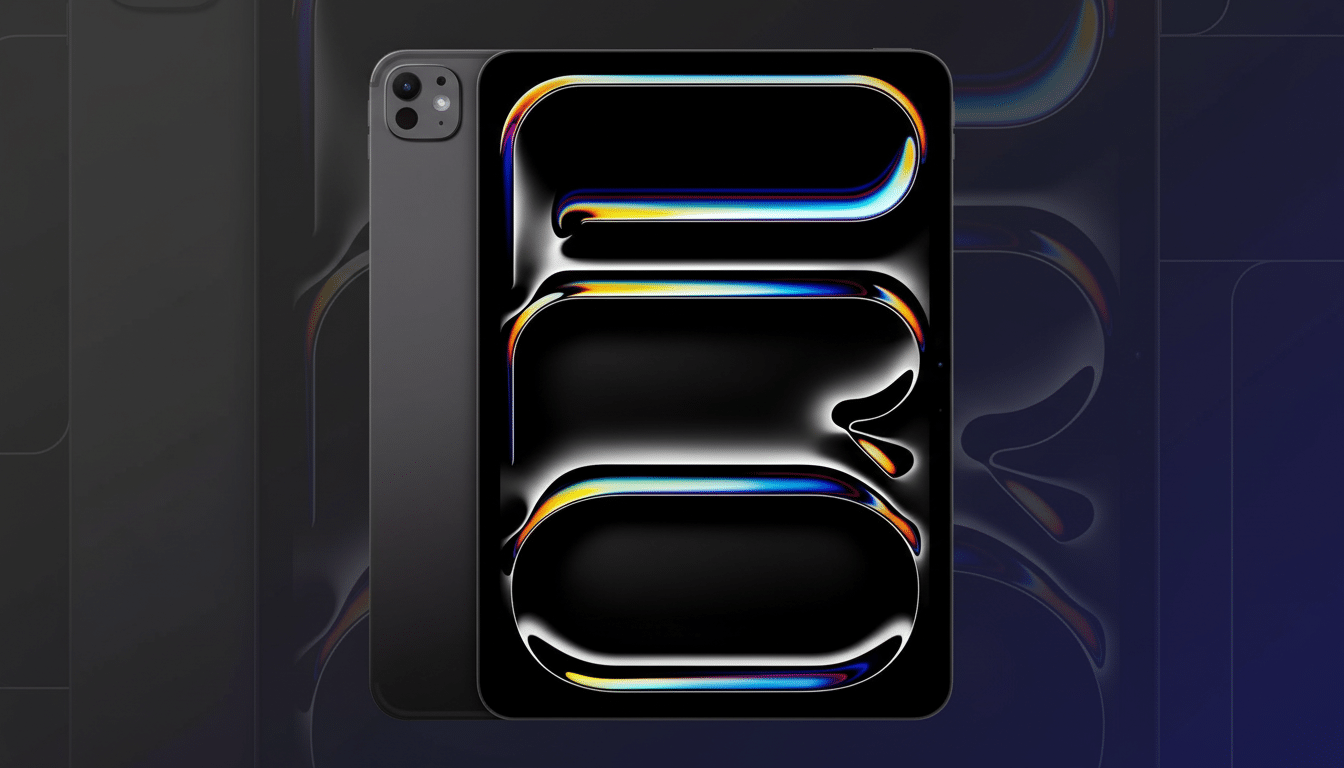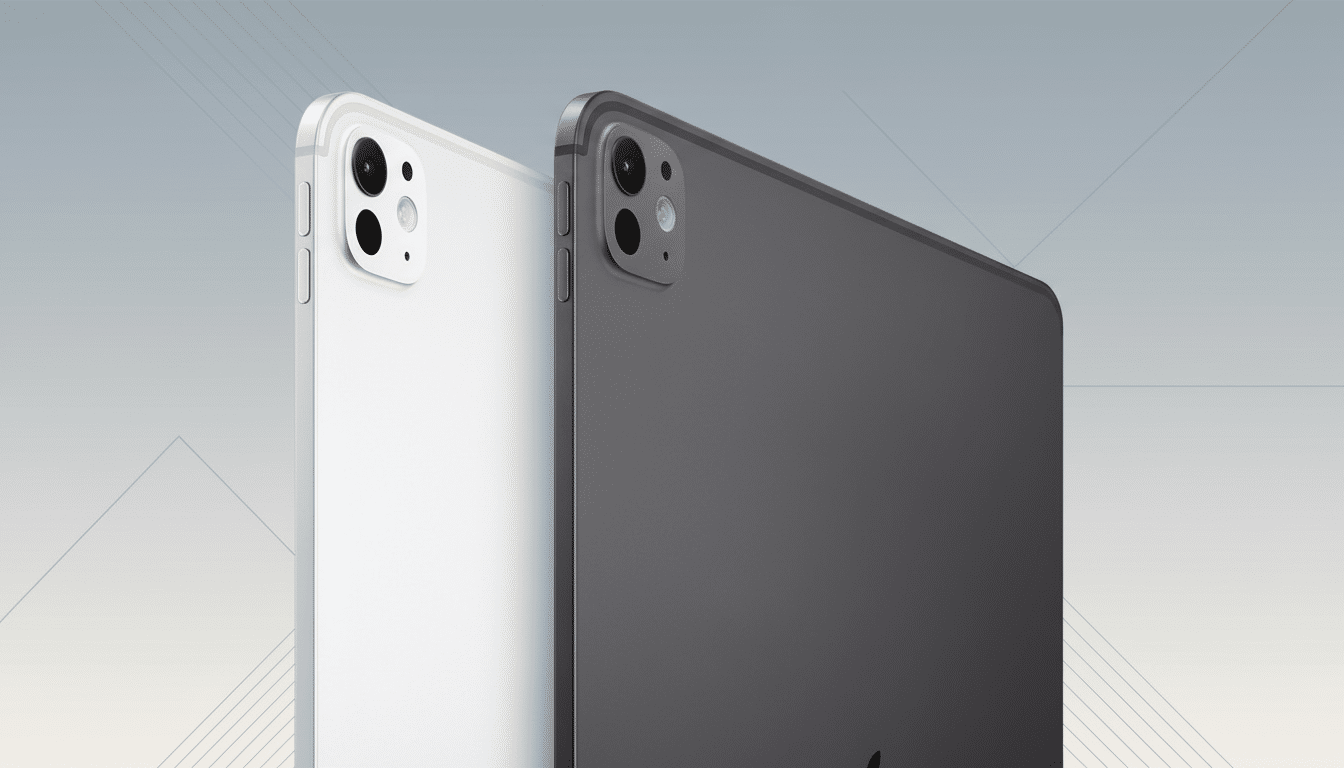Apple’s marketing boss has been teasing “something powerful” on social media, sharing a stylized silhouette that can’t really be anything else but a blue MacBook lid making a V-shape. And with Bloomberg’s Mark Gurman reporting that three new “Pro” devices are in line, the writing is pretty much on the wall: A new 14-inch MacBook Pro driven by an M5 processor looks imminent, and could land in a fresh finish inspired by iPad Air.
What Apple’s cryptic teaser suggests about Mac updates
The image plays as pure Apple misdirection and affirmation, all at once. The V-shape may be suggestive of a fifth-generation M-series processor, and the blue-tinted silhouette would tie in with Apple’s newfound fondness for more striking colors being rolled out across iMac as well as iPad ranges. Apple tends not to shift the MacBook Pro’s exterior dramatically between major overhauls, so a new finish — especially something like this tasteful blue with a nod to iPad Air — would be a noteworthy, low-stakes way to telegraph a new generation of device without retooling the chassis.
- What Apple’s cryptic teaser suggests about Mac updates
- The M5 silicon outlook and expected gains in efficiency
- MacBook Pro and the blue ‘fiasco’ color strategy
- iPad Pro and Vision Pro rumors point to useful upgrades
- Performance hints and early benchmarks for M5 devices
- What to watch next as Apple lines up upcoming releases

There’s a practical angle, too. Apple’s tougher anodization, new with Midnight finishes, has minimized smudging, and deeper hues feel practical for pro hardware. A blue Pro would also provide a visual break for an M5 model, ahead of the usual later-in-the-cycle launches of that device’s M5 Pro and M5 Max siblings, Gurman further suggests.
The M5 silicon outlook and expected gains in efficiency
Look for the M5 to be an efficiency-first jump with some performance wins where it matters most. Apple’s M4 arrived on a more polished 3nm process and brought significant GPU improvements along with a Neural Engine capable of 38 trillion operations per second. The industry scuttlebutt is that M5 remains on an evolved 3nm node (a derivative rather than a full-fledged jump), which generally delivers mid-teens gains for CPUs, larger uplifts for GPUs, and a better power profile.
The headline impact for pro workflows would be sustained performance under load. A cooler, thriftier chip will keep clocks higher longer, and that matters for Xcode compilations, 4K and 8K encodes in Final Cut Pro, and multi-layer Photoshop work. And if Apple pairs that M5 with faster unified memory, or even some tweaks to its media engines here and there, an otherwise matching MacBook Pro could feel faster in real-world use than the raw synthetic benchmarks might indicate alone.
MacBook Pro and the blue ‘fiasco’ color strategy
Color is strategy, not just fashion. Apple has long saved cheeky finishes for its consumer lines, but that wall has been coming down. A more restrained blue, on a MacBook Pro, would complement the palette of the iMac and iPad Air’s Blue without diluting what Pro is about. The manufacturing part of the story is important: better anodization hardness and surface treatments can make darker shades viable for devices that live in backpacks and studios.
If this is the stock 14-inch model with M5 (and not the Pro/Max level yet), a different finish will make customers and retail staff alike instantly aware of what’s new at the entry level. And it’s a smart way to freshen shelves when the outside design (and ports) will probably remain familiar: HDMI, SDXC, MagSafe, and three Thunderbolt ports have already achieved a good-enough balance for creators and developers.

iPad Pro and Vision Pro rumors point to useful upgrades
Gurman has also referenced an M5 iPad Pro and a refreshed Vision Pro thrown into the mix. The tablet is also said to standardize on a minimum of 12GB of RAM and bring dual front-facing cameras — one dedicated to each orientation — which would clean up video calls whether the device sits in an onboard keyboard case or if it’s held vertically. It’s a subtle shift that has an oversized effect on quality of life for remote collaboration.
The mixed-reality headset is said to get a more comfortable Dual Knit Band and a brand-new Space Black option. Some reports also referred to an R2 coprocessor for input processing, but TSMC’s manufacturing timelines hint that next-gen 2nm chips are still further off, so a superior 3nm path in the near future is more viable. Connectivity and weight should be the same, meaning a premium will likely also be placed on fit and finish over raw specs.
Performance hints and early benchmarks for M5 devices
Some afternoon Geekbench 6 numbers associated with supposed M5 iPad Pro devices show about a 10–12% multi-core CPU bump and up to a 30–36% increase in GPU performance over M4-class numbers. Pre-release scores aren’t a guarantee, of course, but they’re in line with what some process refinements and architecture tweaks can get you. In the real world, this would shave minutes off code builds, speed up those HEVC/ProRes workflows, and quicken on-device AI tasks like image creation and transcription.
What to watch next as Apple lines up upcoming releases
Don’t be surprised if Apple brings this wave in with a simple online reveal as opposed to a full-stage event — its silicon cadence is now consistent enough that the press-first rollout works. Be on the lookout for a base 14-inch MacBook Pro with M5 to drop first, with higher-end configurations to follow later with M5 Pro and M5 Max systems. Bloomberg has also highlighted refreshed HomePod mini, Apple TV, and AirTag on the roadmap, in addition to revisions of the entry iPad, iPad Air, Studio Display, and a new M5 MacBook Air.
For now, the teaser serves its Apple mission: It tantalizes with a clear question. But if a blue MacBook Pro with M5 shows up under the hood, expect benchmark wins that don’t matter as much as day-to-day efficiency, sustained performance, and better on-device AI — precisely the type of “power” Apple wants to show you rather than tell you about.

